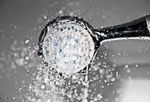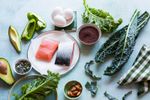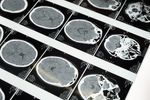A functional medicine doctor discusses how to promote well-being and improve longevity with “good stressors.”
An overarching theme of nurturing your longevity genes and aging well is the concept of hormesis. Hormesis is your body’s response to small healthy stresses — say, fasting for a short time or biking up a brief, steep hill. These little stresses, or short periods of adversity, stimulate the body’s defenses against aging without doing harm. Hormesis is an easy umbrella under which a lot of our advice lives and it can help you think about self maintenance in a new way.
"These little stresses, or short periods of adversity, stimulate the body’s defenses against aging without doing harm."
Small stresses regarding food, exercise and temperature are challenges you’re going to seek out from now on. It’s a playful, proactive way to approach wellness, and a great way to reframe necessities like stepping outside on an ice-cold morning to walk the dog (skip the coat).
Not every change geared toward aging well is complex or difficult. Here are a handful of simple tweaks that can have profound effects.
1. Add in Microbursts of Physical Intensity
One way to spark hormesis and stimulate your longevity gene pathways is to pepper your workout with short bursts of serious effort. Whether you’re walking uphill, biking, rowing or swimming, you can inject regular intense microbursts into the session.
How intense? Well, one measure of moderate exercise is that you’re able to talk while doing it — your breathing comes easily enough that you could carry on a conversation. So during microbursts, you should be working so hard (and breathing so hard) that you can’t chat. Working out with a pattern that builds to microbursts is sometimes called high-intensity interval training (HIIT). It sounds specific, but it’s nothing you can’t craft on your own. A simple format you can apply to pretty much any type of exercise: Ramp up for 1 minute; go hard for 1 minute; drop back down to a comfortable pace for 3 minutes; repeat.
If you’re just introducing the HIIT concept, do three rounds with this pattern, within an otherwise normal workout. As you become more comfortable, you can add more high-intensity intervals throughout the session. It can be fun and distracting, turning a monotonous activity (like swimming laps) into a bit of a game — and it’s great for your body.
2. Roll Out Your Fascia
Very often it’s not the muscle — it’s the tight, constricted fascia — that’s causing pain in your body. Fascia is the stuff that encases the muscles, like a layer of Saran Wrap (think about that film on a raw chicken breast). As you age, it tightens. Stretching doesn’t really get to tight fascia. It needs pressure to help it release, like what you’d get from a deep-tissue massage or from using a foam roller. Tight fascia doesn’t just cause aches in muscles and joints; it can also change your gait and compromise your posture, generally making you look and feel old.
The solution is rolling out muscles regularly: Foam-rolling is as important to the body as exercise. You should be rolling out your muscles — quads, glutes, calves, deltoids, pectorals — a few times a week; it doesn’t take long — just five or 10 minutes. This will help with existing pain and will also set you up better going forward. Rolling loosens the fascia and helps muscles work better, you can prevent all sorts of injuries (as you age, you’re more prone to injury). Because it makes your body mechanics more efficient, rolling can be your first line of defense against commonly recommended surgeries like hip or knee replacement.
"Foam-rolling is as important to the body as exercise."
At first, it may be a little painful in a “hurts so good” sort of way, but soon you’ll become hooked on the relief you feel and how much better your body works. It’s easier to follow a video than it is to read about how to foam-roll. Trainer Lauren Roxburgh has great step-by-step YouTube content. Pretty much any roller will do, so don’t get overwhelmed by the available options. If you have a roller in the closet, pull it out and get started. The sensation is a little less intense if you set yourself up on a rug or an exercise mat.
Leave your roller in the living room or wherever you watch TV or otherwise hang out. Try a prompt, like whenever you’re tempted to check social media, you roll out a body part first (customize this, so it works for you) — a.m., p.m., before and after exercise, while you talk on the phone. Make rolling a habit. The more you do it, the better your body will feel.
3. Take a Cold Rinse After a Hot Shower
Real life provides many opportunities for hormesis — moments of “that which does not kill me makes me stronger.” One of the easiest examples of this, and one of our favorites, is ending hot showers with 30 to 60 seconds of cold water. On a gut level, you can just feel that this is good for you — it’s instantly invigorating. It gets your chi (aka energy) flowing. And now in Western medicine, it’s also on the books as a healthy practice.
Research shows that it ups the production and health of your mitochondria. Mitochondria are the energy sources of your cells — the essential force of life and longevity. They transform food and oxygen into ATP, or adenosine triphosphate, a type of molecule that powers biochemical reactions. ATP molecules are especially abundant in the cells of your heart, brain and muscles. The advice in this book, on food, sleep and nearly everything else, supports mitochondrial production and optimal function. And this little trick — a cold shower at the end of your hot one — does too.

The hot-to-cold principle works in reverse as well. Swim in a cool pool, then bask in a hot tub. Go back and forth between a sauna and a cold shower. Or just step outside in winter for a few minutes without a coat. It’s so refreshing, especially after hours in an overheated indoor environment. That bracing shot of cold air is good for your body (in spite of what you may have been told as a kid).
The same principle of hormesis applies to other light stresses on the body, like short periods of fasting or bursts of challenging physical activity. These small challenges encourage autophagy, the body’s cleaning system, and improve cellular function and repair. As you get older, cellular function and the ability to repair diminish. The body can better repair damage when you give it these small acute stresses. “Damage” doesn’t need to be anything dramatic. It’s just the natural wear and tear of living and aging. Your body is always working to repair itself and hormesis helps.
4. Tap Into the Power of Medicinal Mushrooms
Remember when we all upped our consumption of kale? It’s time to do that with mushrooms. Current research shows that certain medicinal mushrooms — especially the varieties reishi, lion’s mane and chaga — contain high quantities of the antioxidants ergothioneine and glutathione, compounds known to prime the immune system and to help prevent the onset of Alzheimer’s and Parkinson’s.
Lion’s mane in particular is known as a “nootropic,” which means it can enhance memory and cognitive function. You can get these medicinal mushrooms via various delivery systems — powder, capsule, tincture — all of which seem to be effective. A nice place to start is with mushroom tea, which you can brew from a powder and drink on its own, or mix into bone broth, a smoothie, coffee, black or green tea. As tea, mushroom powders taste a bit earthy; some are a little bitter (those high in reishi) and some are subtle (chaga has vanilla undertones and is delicious by itself ). Have a couple of mugs a day.
RELATED: The Secret Immune-Boosting Power of Mushrooms
An organic powder we like is Four Sigmatic’s 10 Mushroom Blend. If you prefer capsules, there’s Host Defense’s MyCommunity, a blend of 17 medicinal mushrooms. These blends are extra powerful because they bring together the benefits of so many different kinds of medicinal mushrooms.
If we had to choose only one mushroom for longevity and anti-aging, it would be reishi. It supports the immune system and cardiovascular health; it can lower blood pressure, reduce stress and inflammation and even help prevent cancer. The mushroom lion’s mane supports memory, cognitive function and the nervous system. The combo products we recommend contain both reishi and lion’s mane.
Integrating fresh organic mushrooms into your cooking or your salads is also beneficial — varieties like shiitake, maitake and oyster all have medicinal and health-boosting properties. For detailed info on the healing power of various types of mushrooms (and a lot more), there’s a great book called The Rebel’s Apothecary: A Practical Guide to the Healing Magic of Cannabis, CBD and Mushrooms, by wellness expert Jenny Sansouci.
5. Get Some Sunshine in the Morning
Circadian rhythms — or feeling the arc of a 24-hour day in conjunction with nature — are helpful in self-care. And sunshine, which we’ve been programmed to fend off with potentially toxic sunscreen, is good for your health. You don’t want to always be covered up against sunlight. Get outside and feel the sun on your face and (season permitting) arms and legs every day.
One of the keys to feeling sleepy at night is to kick off your day with natural light. If you’re lucky enough to have morning sun in your bedroom, let it stream in. Otherwise, get outside first thing, even for just a few minutes. This tells your body it’s time to wake up, stops the flow of the sleep hormone melatonin and sets up your internal clock to keep you energized during the day and help you wind down at night. (Here's more on how your senses regulate your sleep.)
"Without high-quality sleep, your body and brain miss out on essential self-cleaning and restoration."
The timing of meals also has a powerful effect on your body clock. In terms of metabolic rhythm, your biggest meal should be at midday. If you eat late at night, your body thinks it’s daytime (the time it needs calories and energy). This can negatively affect the secretion of sleep hormones and that translates into trouble falling asleep, or a generally restless night.
Without high-quality sleep, your body and brain miss out on essential self-cleaning and restoration. And then you’re in that vicious cycle we mentioned earlier (you wake up unrested, you reach for carbs for energy, you have a late-afternoon coffee to stay alert, you find that you can’t fall asleep that night and so on). Taking your sleep life seriously is one of the most important things you can do for your health. Linking to daylight and darkness, connecting with nature in this very basic way, will help.
RELATED: Soothing Yoga Poses for Better Sleep




